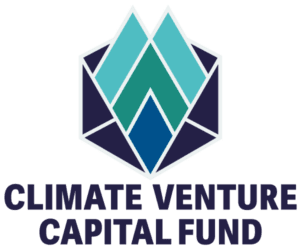Another month, another milestone.
We’ve just published our first Impact Report. It has been quite an effort – not just because it’s our first attempt but because we’ve effectively rewritten the script on VC reporting in New Zealand.
When we set out we thought templates or examples must have already been set for our sector. Apparently not. There are plenty of excellent impact reports from other industries, but not many for VCs.
In particular, we wanted to count the total impact of our investments including our investee companies’ activities. Simple idea. Turns out, only a fraction of VC funds are reporting on their indirect emissions, and even from the companies that they invest in and are responsible for (Scope 3, Category 15).
Scope 4 savings are still an emerging discipline. These reductions are, for example, when a householder doesn’t buy a high-emissions product because they have bought a lower-emissions product from one of our portfolio companies. So the overall emissions go down.
To genuinely address climate change, organisations need to take a holistic view of their impacts and ensure that they are reducing emissions overall.
Our impact
So what’s the actual impact, then? Well, it’s pretty small as you’d expect from the first year. But it’s set to increase rapidly.
- 69 tonnes of CO2e in reduced emissions for the year from one company
- A clear path to 450 tonnes from two companies in FY23
- Potential to reach 1 million tonnes from other investments within the first 10 years
The impact from avoided emissions from our investments dwarfs the emissions from the Fund, and the companies themselves. We expect this trend to accelerate dramatically as our companies continue to trial and then shift systems into production,
In particular, MGA Thermal’s energy storage technology can help hurry the transition to lower emissions renewable electricity.
The view from Melbourne
Just in case you think we’re blowing our own trumpet we asked Dr Jodi York, chair of the Fund’s Impact Committee and also Chief Impact Officer for Melbourne-based Kilara Capital to give us an independent point of view.
She’s impressed with the level of rigour in the report.
It’s a real step forward towards what’s already happening in Europe, but not nearly as much in Australasia. A lot of the focus has been on industry reducing emissions but very little on investors. It looks like investors don't have a carbon footprint until you actually look at what emissions you are financing,”
Dr Jodi York

“This is one of the first reports to specify the impact of its investments”, says York.
Other wins
Other highlights in the Annual Report include:
- Completing the fund’s first close in January 2023, including investments from a broad range of institutional, family office and high-net-worth investors
- Investing in four companies, including:
- o MGA Thermal – thermal energy storage, NSW
- o Cleanery – low emissions powdered cleaning and personal care products, Auckland
- o Liquium – green ammonia, Wellington
- o Zincovery – recycling zinc without using coal, Christchurch
- Confirming commercial terms for two follow-on investments into existing portfolio companies
The fund recently invested in horticultural tech company Hot Lime Labs and announced an extension to its first fundraising round – though, both developments fall outside of the reporting timeframe.
It’s incredibly satisfying to look back on this first year and see that we have delivered on what was promised.
We know there is strong interest among investors in emissions reduction technology. And we’ve seen that there are more opportunities to invest than we can possibly support. It’s an exciting time to be in this space.
Climate Venture Capital Funds’s success fits with global trends. In 2022, despite a downturn in broader venture capital fundraising, global climate tech funding grew 16% year on year.
*Greenhouse gas reporting falls into four groups or scopes.
Scope 1
These are “direct” emissions – those that a company causes by operating the things that it owns or controls. These can be a result of running machinery to make products, driving vehicles, or just heating buildings and powering computers.
Scope 2
These are “indirect” emissions created by the production of the energy that an organisation buys. Installing solar panels or sourcing renewable energy rather than using electricity generated using fossil fuels would cut a company’s Scope 2 emissions.
Scope 3
These are also indirect emissions from a company’s supply chain – meaning those not produced by the company itself. They differ from Scope 2 as they cover those produced by customers using the company’s products or those produced by suppliers making products that the company uses, such as air travel by company employees. Scope 3 Category 15 refers to the emissions from companies that a fund has invested in.
Scope 4
This is commonly described as covering “avoided emissions”, ie emissions that don’t happen at a third party because of a switch from that third party’s products to lower emissions products. It is a voluntary metric devised by the World Resources Institute. See this paper for the framework.
